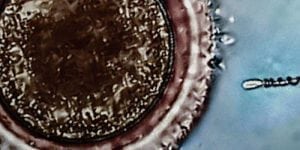Endometriosis, also known as simply endo, is a leading cause of fertility problems, but reproductive technology can improve the outcomes.
What Is Endometriosis?
Endometriosis occurs when endometrium-like lining is found outside of the uterus. In normal circumstances, the endometrium lining of the uterus is expelled each month during menstruation, but women with endo deal with the effects of endometrium’s migration to the ovaries, the fallopian tubes and the vagina.
Endo can occur in other parts of the body, but the female reproductive system is a common target for the condition. Pain, excessive bleeding and gastrointestinal problems are common symptoms. Unfortunately, so is infertility.
How Is Fertility Affected?
The exact relationship between this condition and infertility is not crystal-clear, but theories abound. Scar tissue may keep an egg that’s trying to exit the ovary from success. Fallopian tubes can even be blocked by scar tissue. If the egg can’t connect with sperm or make the journey to the uterus, conception cannot occur.
What Is Reproductive Technology?
Artificial reproductive technology, ART, is different from non-ART methods because it can take on certain tasks when it comes to conception. This puts less responsibility on the woman who has endo.

However, in-vitro fertilization (IVF), an artificial reproductive therapy, takes some pressure off of the woman’s body, because the egg is retrieved and united with sperm in a lab. After the embryo is created and has grown for a few days it is then placed in mom’s uterus, and this removes one obstacle on the journey to conception.
Other Considerations
One key factor when considering reproductive technology is timing. The usual approach when dealing with infertility is to start with conservative methods and move towards reproductive technology when all else fails. Research proves this may not be the best option for women with advanced endo.
Waiting too long to use reproductive technology can decrease the effectiveness in women who suffer from endo. Though ART usually isn’t the first step for women under a certain age, some researchers now think a woman with advanced endo would benefit from starting as early as possible, even in her twenties.
Age is an enemy when it comes to conceiving and having endo, on top of being over 35, could decrease success rates substantially.
Limits to What Is Known
A Japanese study that unearthed these findings only set out to see the outcome, not the reasons behind it. The reasons are still only speculation. That means we don’t know for sure why reproductive therapy is better than non-ART for women with endometriosis.
Larger studies on women of different ages are needed, but so far, the results are promising. The women who received reproductive therapy were more likely to conceive, and this study underscores the importance of seeking medical interventions early if endo is a factor.




